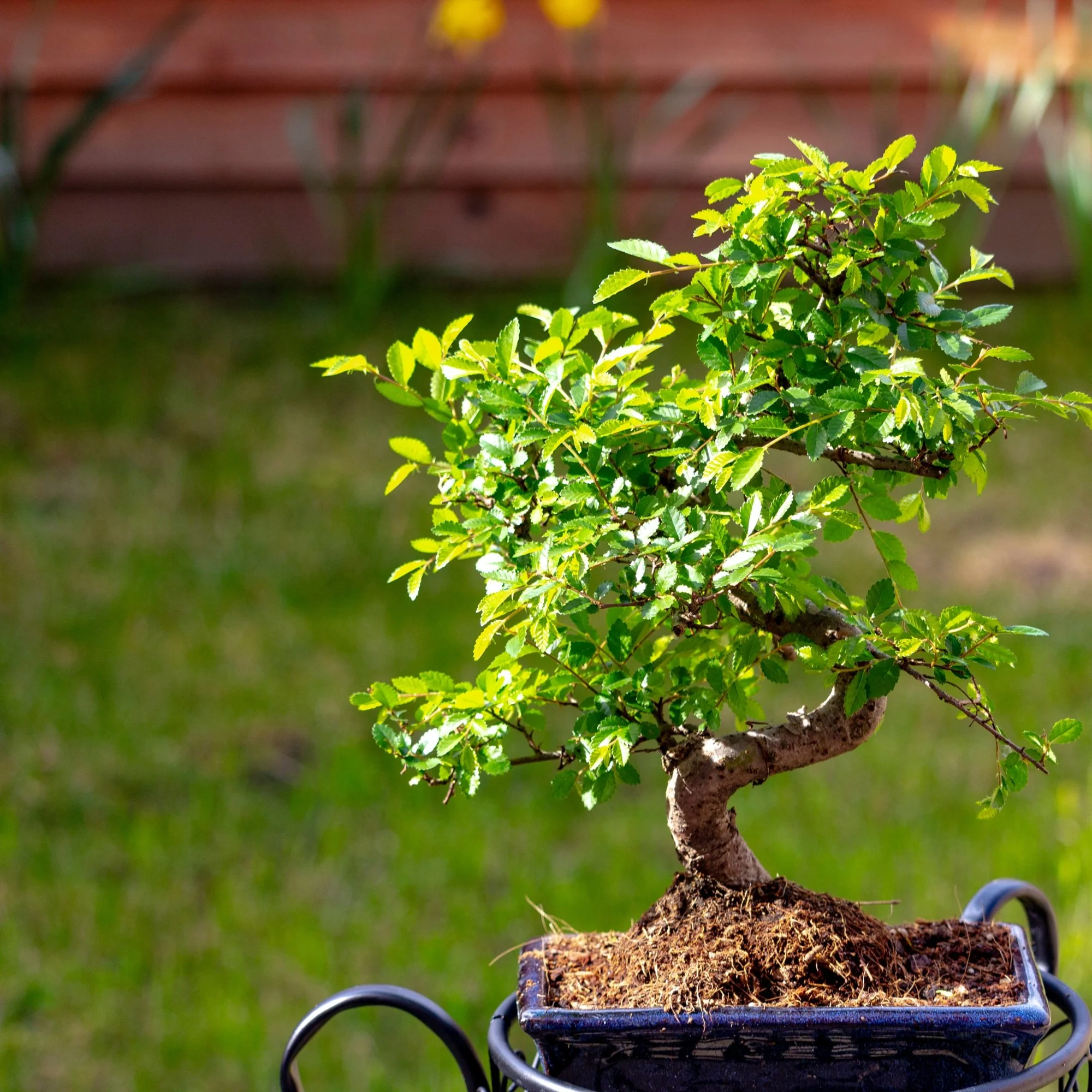On this page, you’ll find 7 handy hints and tips from Way of Life Bonsai for caring for Chinese Elm Bonsai.

Caring for Chinese Elm Bonsai: The Chinese elm grows well in full sun and also in partial shade. In mild climates it can stay outside during the winter. A Chinese Elm bought as an indoor Bonsai can be placed outside during the summer and in winter it is best to take it into a cold frost-free room.
Chinese Elms can usually endure some frost but it seems that it differs depending on the region it was imported from. Trees from northern Chinese regions seem to be more frost-hardy that those from southern areas.
Depending on the temperatures of their winter quarters Chinese Elms can either drop their leaves or keep them until spring when the new shoots emerge.
Caring for Chinese Elm Bonsai: The Chinese Elm must be watered generously as soon as the soil gets dry. Drought should be avoided as well as permanent wetness.
Caring for Chinese Elm Bonsai: During the growing season the Chinese Elm should be fed well. It doesn’t require very special fertilizer. A combination of solid organic fertilizer and a well-balanced liquid chemical product is a good concept.
When the elm is in a cold place in winter it should not be fed during dormancy.
Caring for Chinese Elm Bonsai: If you let the Chinese Elm grow freely it will thicken rapidly. It responds well to frequent trimming which produces a dense ramification and it also buds well from old wood after strong pruning.
Allow shoots to extend to 3 or 4 nodes and then prune back to 1 or 2 leaves. A good time for pruning large branches of the Chinese elm is late autumn.
The elm can be shaped very well with normal wiring and guy wires.
Caring for Chinese Elm Bonsai: Younger Chinese Elms should be repotted every two years, older and large specimens can be repotted in longer intervals. Spring is the best time for repotting.
Root pruning should be done with precision and as the Chinese Elm tends to produce crooked and intertwined roots you should work on them very carefully in order to create a regular nebari as good as possible.
The Chinese Elm has no special requirements concerning the soil, but it should be well-drained. A standard soil mixture can be used.
Caring for Chinese Elm Bonsai: Chinese Elm Bonsai trees can be propagated by cuttings without problems usually. Propagation by seeds is less recommendable.
Caring for Chinese Elm Bonsai: Often the Chinese Elm is infested by spider mites or scale when humidity is low. Appropriate pesticides should be used and frequent spraying with water might help additionally. Spraying with thinned lime-sulfur or systemic pesticides can make the Chinese Elm drop all its leaves, so avoid these products.
No posts found!
Web Design | Terms | Privacy